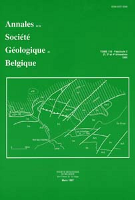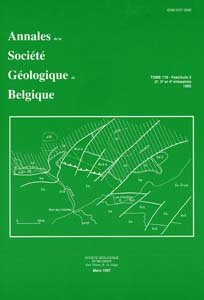- Startpagina tijdschrift
- Publications spéciales = special publications
- La géologie de l'ingénieur - Centenaire de la Soci...
- Importance of Quaternary events for the geological conditions of building sites
Weergave(s): 652 (10 ULiège)
Download(s): 572 (2 ULiège)
Importance of Quaternary events for the geological conditions of building sites

Abstract
The forms of the present relief and surficial deposits are to a great extent the product and relict of Quaternary conditions, when climatic events of high intensity repeatedly affect the natural environment. This interference can be appreciated only when the extent of ice-covered areas and indirect effects of glaciation on neighbouring regions are realized. Their knowledge is particularly important for engineering geologists whose interest, owing to the character of their work, is mainly centered on the features of the ground surface and on the surface layer of rocks, deposited, weathered, or redeposited during the Pleistocene.
The engineering geologist is faced with different problems in areas once glaciated and in periglacial areas which were situated in front of the continental ice sheets. In the mountain regions he has to consider whether or not mountain glaciers filled the valley. In the positive case, overdeepened valley may have developed and steep valley slopes may have suffered from sliding after the glaciers had melted away.
Fluctuation of sea-level and vertical movements of continental blocks, i.e. subsidence due to loading by ice and rising after ice retreat, resulted in Canadian and Scandinavian coastal areas in the uplift of young marine sediments and development of unstable quick-clays. Vertical movements have also promoted the alternation of erosion and accumulation cycles in the history of watercourses. These, in turn, gave rise to a flight of stream terraces.
The denudation relics of upper terraces are often buried by slope deposits of great thickness. Sands and gravels were supplied to streams by torrents which carried material from extensive fans rimming the bases of mountain slopes.
Quaternary sediments differ appreciably from older rocks, as they are mostly unconsolidated and their physical and technical properties are controlled by their fabric, chemical composition, and genesis. Whether they will be used as building material or will serve as foundation soil, the environment of their proveniance must be kept in mind. The character of sands transported by and deposited in water differs from that of wind-blown sands and from sands originated by weathering in situ.
The relationship between Quaternary geology and engineering structures will be shown using several actual examples.





